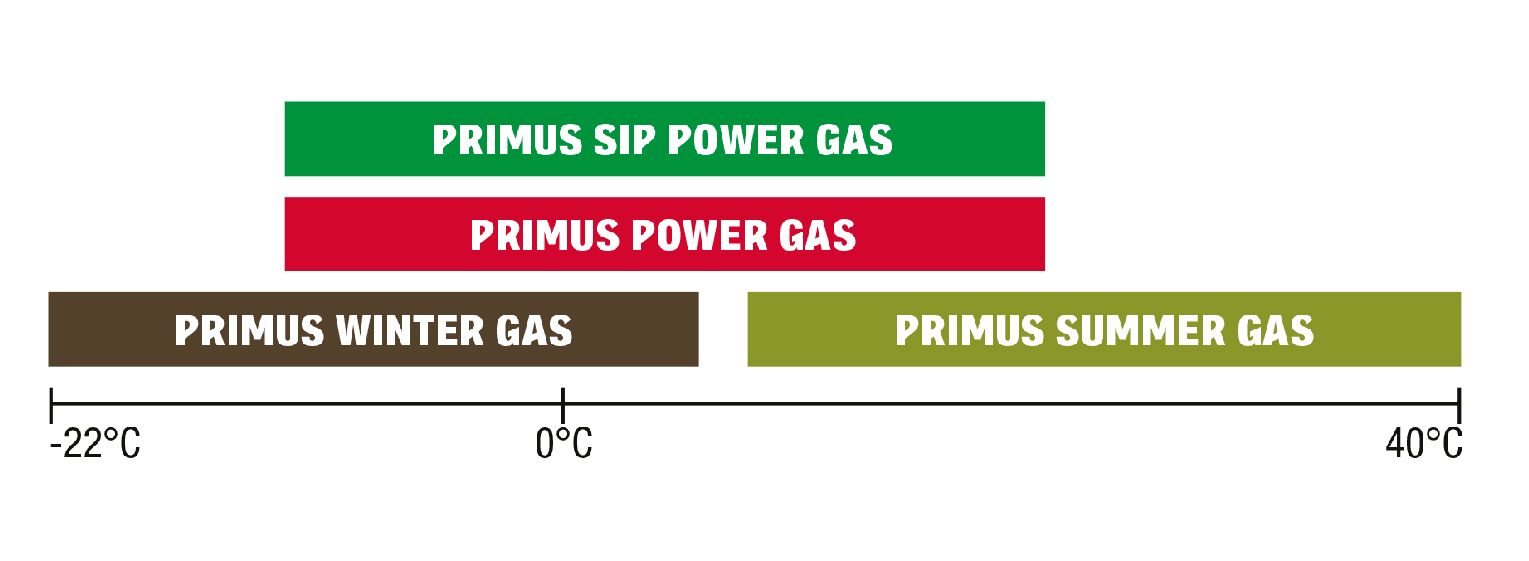

PRIMUS
Everything you need to know about canister gas for outdoor adventures
Are you planning to bring a stove for the first time on one of your outdoor adventures? If you are new to canister gas or want to learn more about it, this guide will provide you with everything you need to know.Canister gas is a popular choice for outdoor enthusiasts looking for a convenient, portable, and reliable fuel source. Whether you’re camping, hiking, or bikepacking – canister gas is an excellent option for powering your portable stove, heater, or lantern. However, choosing the right type of canister gas for your needs and using it safely requires some knowledge and attention. To prepare you for your first adventure with a camping stove and camping gas, we answer the most critical questions about canister gas and its use below.
What is canister gas?
Let’s start with the basics. Canister gas is a blend of different gases stored in a canister. One example is Primus Power Gas, a mix of propane and isobutane that ensures excellent performance from spring to autumn. Even with temperatures below the freezing point, it still provides enough power to run a stove. Therefore, this fuel type is ideal for all kinds of outdoor activities.
The canister gas is stored in a metal canister with a valve to control the gas flow. The canister is pressurized, and the gas is in liquid form inside the canister. When the valve is opened, the gas is released in its gaseous form and can be ignited for use. Such gas canisters are convenient and therefore fit into any backpack. Power Gas, for example, is already available in a compact 200-gram canister. Because of this handiness, gas-powered stoves are such a popular accessory for many outdoor enthusiasts.
What gas types does Primus have?
To deliver the best experience in various outdoor conditions, Primus offers different canister gas types:
Summer Gas: Summer Gas is a mixture of propane and butane and is optimized for summer conditions with temperatures between 15 °C and 40 °C
Winter Gas: Winter Gas is a mixture of propane and isobutane that works effectively as low as -22 °C.
Power Gas: Power Gas is our best-selling gas and is a mixture of propane and isobutane. A good all-round gas that is perfect to start with when cooking outdoors.
SIP Power Gas: SIP stands for Sustainable Improvement Programme. Here we focus on a more sustainable supply chain and support the use of bio-based fuels. The functionality and temperature range is similar to the classic Power Gas.
How do I connect the camping gas canister to my stove?
In addition to being light and handy, gas canisters are also easy to use. After removing the little protection cover for the valve, you can directly start to connect the canister to the stove. That process is pretty straightforward since the Primus stoves and the Primus gas canisters have matching connectors that don’t require any specific adapter.
Each gas canister has a male thread, and each stove has a female thread. These two threads can easily be screwed together until the stove and the gas canister are firmly connected. This applies to both stoves with a hose and stoves that can be screwed directly onto the gas canister.
At a specific point, this mechanism activates a small pin in the valve that opens a non-return valve in the gas canister. The result is a slight hissing sound that signalizes that a bit of gas is spilling out. However, don’t worry: This is part of the procedure since the o-ring that seals the connection needs a brief moment to compress and close the connection. After that, you only have to screw a little further until the connection is sealed. Congratulations, now you can ignite the stove and start using it!
How do I carry the gas canister in the safest way?
Being out in nature means that you might face challenging conditions and rough terrain. However, this is no obstacle to taking a stove and a gas canister with you. The canisters are very robust and can easily be carried in a backpack.
The only thing you need to be concerned about is the temperature. You shouldn’t expose the gas canister to a temperature above 50 degrees Celsius. That means that you can also transport the gas in your car. However, avoid letting it lie directly under the car’s front window in the bright sunshine. This is one of the places where you can easily reach such hot conditions.
How much gas do I need for my stove?
Now you’re ready to go. However, to plan your adventure perfectly, you should estimate beforehand how much gas you’ll need. Indeed, this question is difficult to answer since it depends on how much you use the stove. It also depends on the circumstances, like the temperatures and the wind. Based on our experience, we can give you the following guidelines:
100 grams of gas can boil 10 litres of water in a traditional pot (in optimal conditions since factors like altitude, wind, temperature, etc. can influence the amount of gas needed)
100 grams of gas can boil 15 litres of water in a specific PrimeTech pot which increases the efficiency of the stove. The reason: Thanks to an integrated heat exchanger in the bottom of the pot, efficiency is increased by 50% compared to conventional pots. That means your water will boil faster, and your fuel will last longer.
A tip: Record how long your gas canisters last. Over time, you’ll get a deeper understanding of your consumption and will therefore be able to estimate the needed amount more accurately.
How much gas is left in my canister?
Do you have an old canister from your last trip at home? Then you might be wondering how much gas is left in that container. The best way to find that out is to weigh your used canister on a scale and calculate precisely how much gas is left.
For example: If you have a canister with 100 g of gas, it weighs 200 g from start. So if you have a used canister at home that weighs 165 g, you have already used 35 g of gas and have 65 g left for your next trip. The following table should be a good support when doing this:
If you are already on the road and wondering how much gas you have left, it is a bit more difficult. The best way to find out the remaining amount of fuel without a scale is to shake the canister and hear how much liquid gas is inside it. However, that requires some experience since you need to get a feeling for the weight and the sound over time.
Primus canister gas guide – summary
In conclusion, canister gas is a versatile and convenient fuel source that is widely used in outdoor activities. Different types of canister gas are available in the market, each with its advantages and limitations. Choosing the suitable canister gas for your needs and using it safely is essential to prevent accidents and injuries. By following the tips and guidelines in this guide, you can enjoy the benefits of canister gas with confidence and peace of mind.
February 07 2022







